Author: Terrell Heick
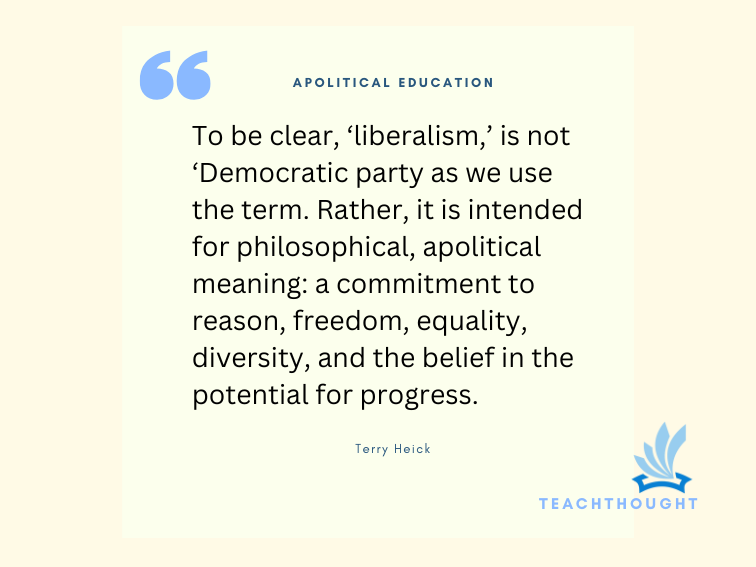
Advocating For Critical Thinking Amid Social Tension – TeachThought
Standing for Critical Thinking and Progress by Terrell Heick At TeachThought, we have always focused on promoting critical thinking cross for use in ‘human’ applications–namely, people (i.e., education stakeholders) and places (i.e., communities). Our mission has been apolitical by design—centered on improving thought, education, and human potential without aligning with political ideologies or factions. However,…
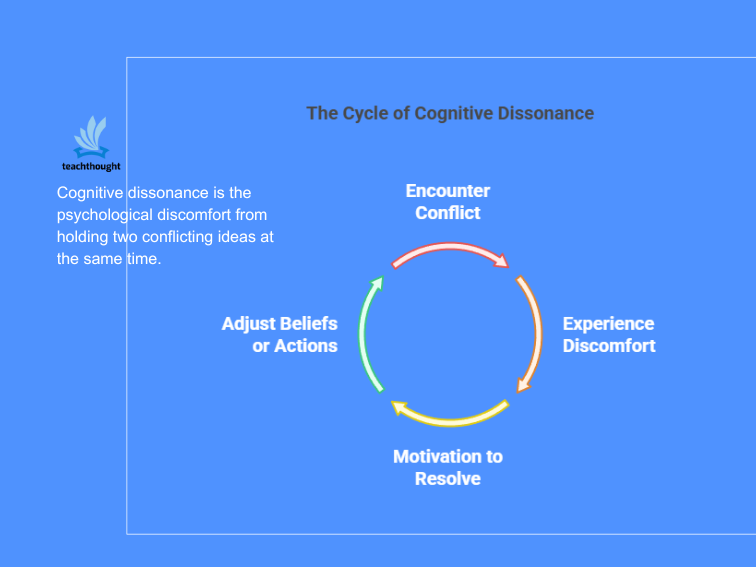
What Is Cognitive Dissonance? A Definition For Teaching – TeachThought
What Is Cognitive Dissonance? A Definition For Teaching Understanding Cognitive Dissonance: A Psychological Framework for Growth and Learning Human beings strive for consistency between their thoughts, beliefs, and actions. When an inconsistency arises—when beliefs and behaviors clash—it creates a sense of discomfort or tension known as cognitive dissonance. This concept, first introduced by psychologist…
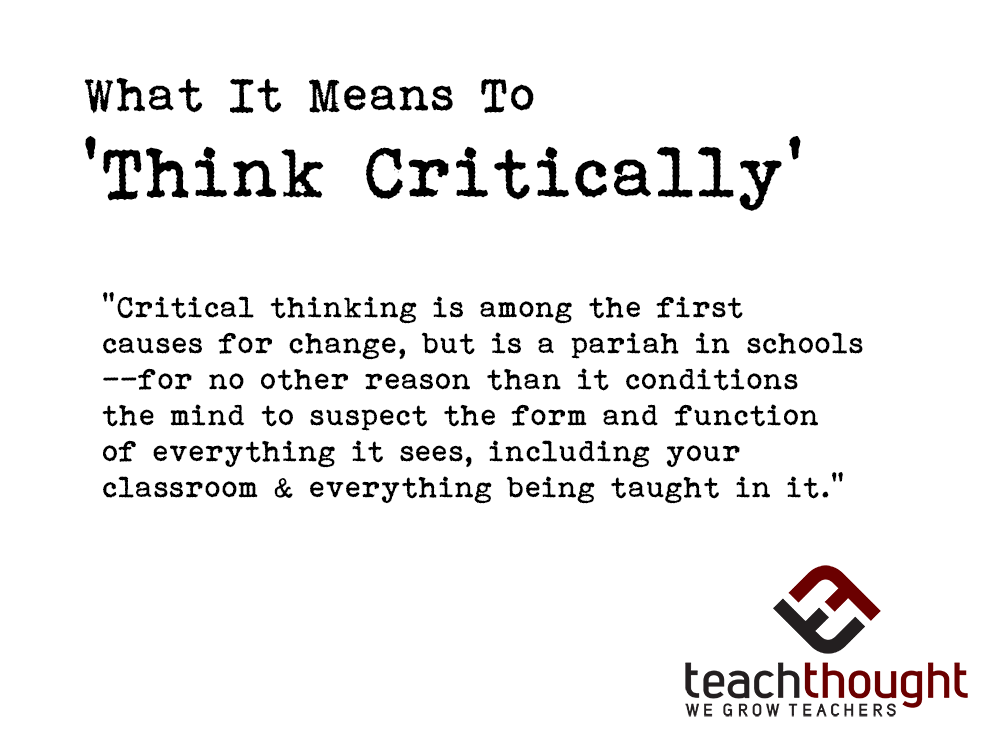
What Is Critical Thinking? A Simple Definition
by Terry Heick What does ‘critical thinking’ mean? Well, that depends on who you ask. For educators, as a term, critical thinking is similar to words like democracy, global, and organic: You hear people use them all the time, but no one seems to understand exactly what they mean. This kind of etymological opacity lends itself…
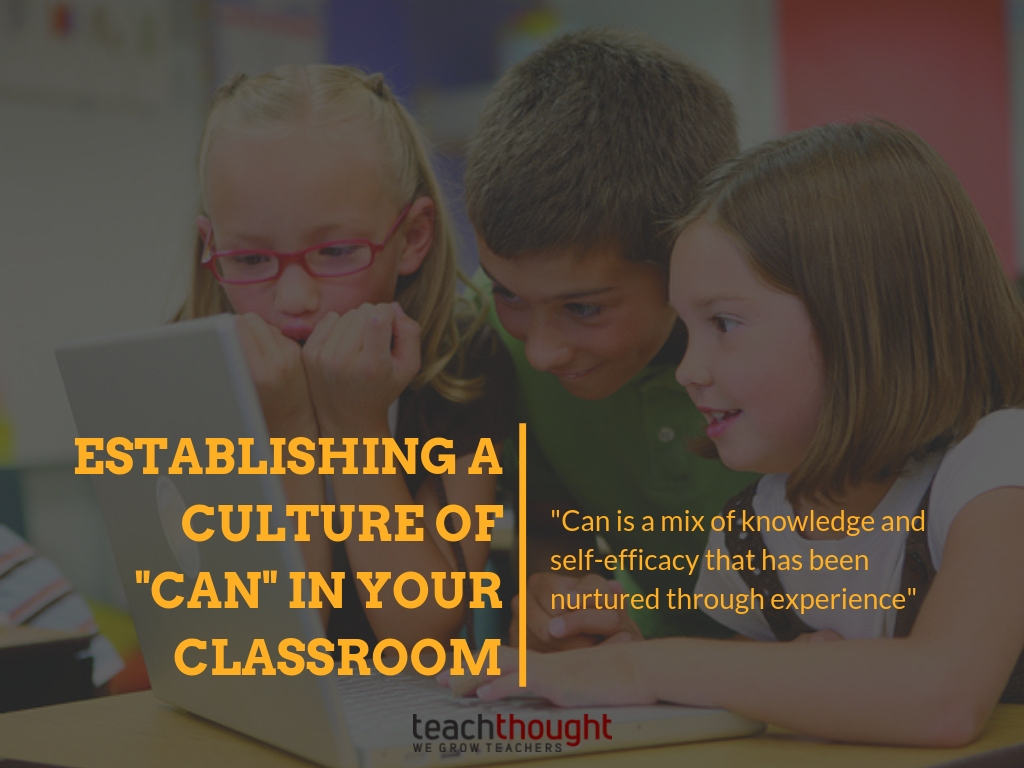
Establishing A Culture Of ‘Can’ In Your Classroom
by Terry Heick The long-term output of any school should be not just proficient students, but enabled learners. An “enabled” learner can grasp macro views, uncover micro details, ask questions, plan for new knowledge and transfer thinking across divergent circumstances. This doesn’t happen by content “knowledge holding,” or even by the fire of enthusiasm, but…

The Necessity Of Self-Criticism In Education
To grow, teachers must be able to reflect critically on their own performance. Education is ‘actuated’ by teachers. It makes sense, then, that education should also be able to reflect critically on its own performance as well. Currently, this occurs through the comforting precision of analysis and numbers. The language of math, data, and statistics…
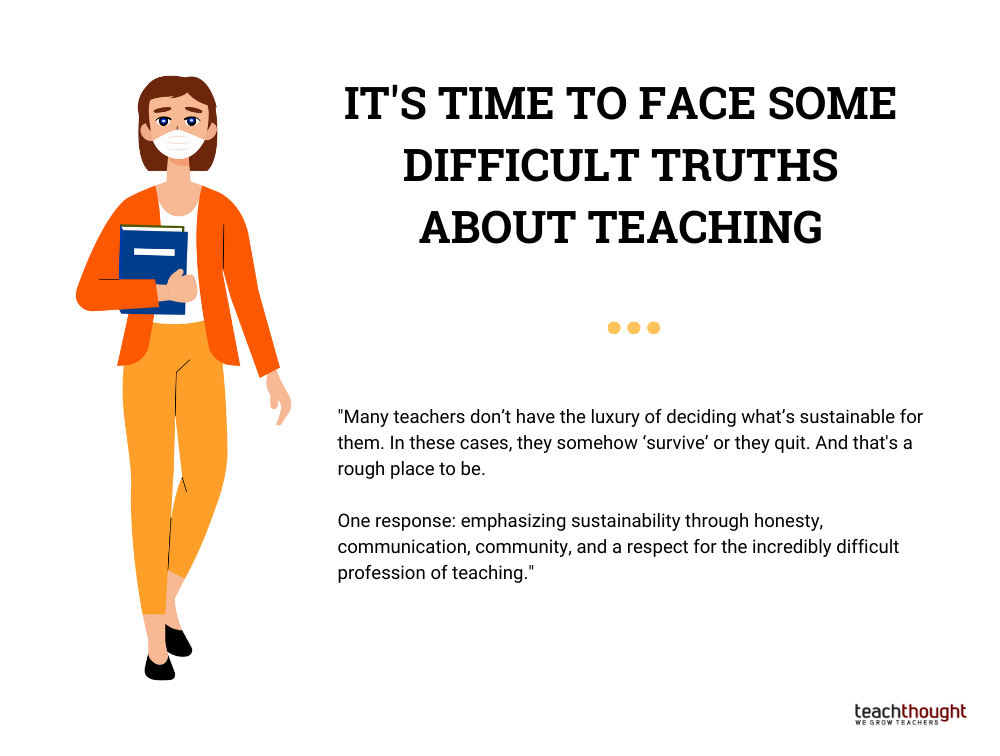
How To Make Good Teaching More Sustainable
by Terry Heick Simple premise, as titled: what sorts of ‘things’ make teaching unsustainable, and what sort of advice can help teachers reflect on these ideas to mitigate any damage and make the profession more enjoyable, and thus sustainable. 10. Grow a healthy and useful professional learning network. See also 10 Reasons Every Teacher Needs…
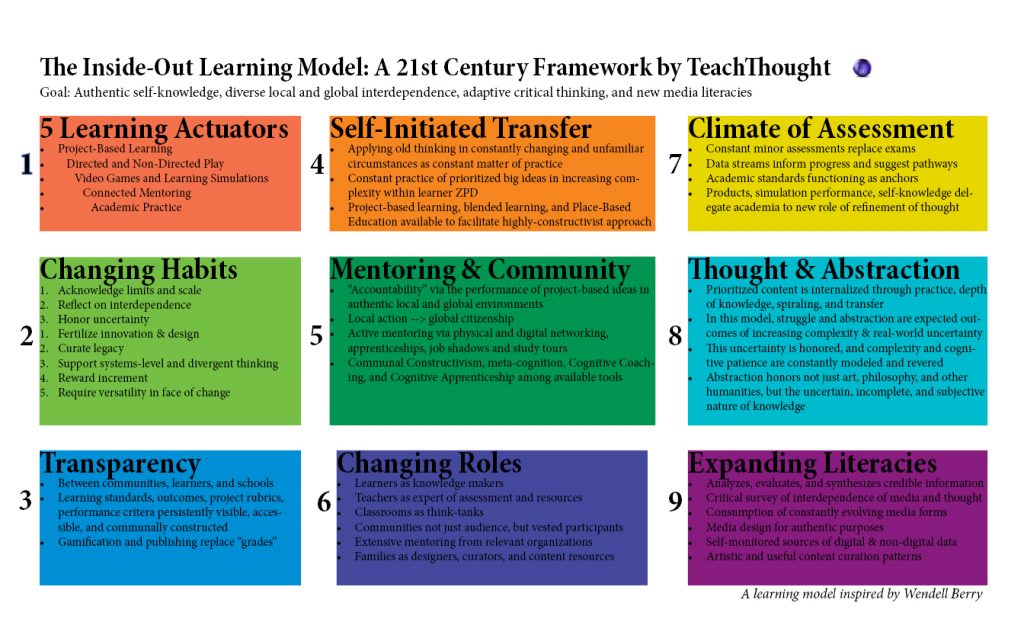
A 21st Century Learning Model
by Terry Heick As a follow-up to our 9 Characteristics of 21st Century Learning we developed in 2009, we have developed an updated framework, The Inside-Out Learning Model. The goal of the model is simple enough–not pure academic proficiency, but instead authentic self-knowledge, diverse local and global interdependence, adaptive critical thinking, and adaptive media literacy. By…
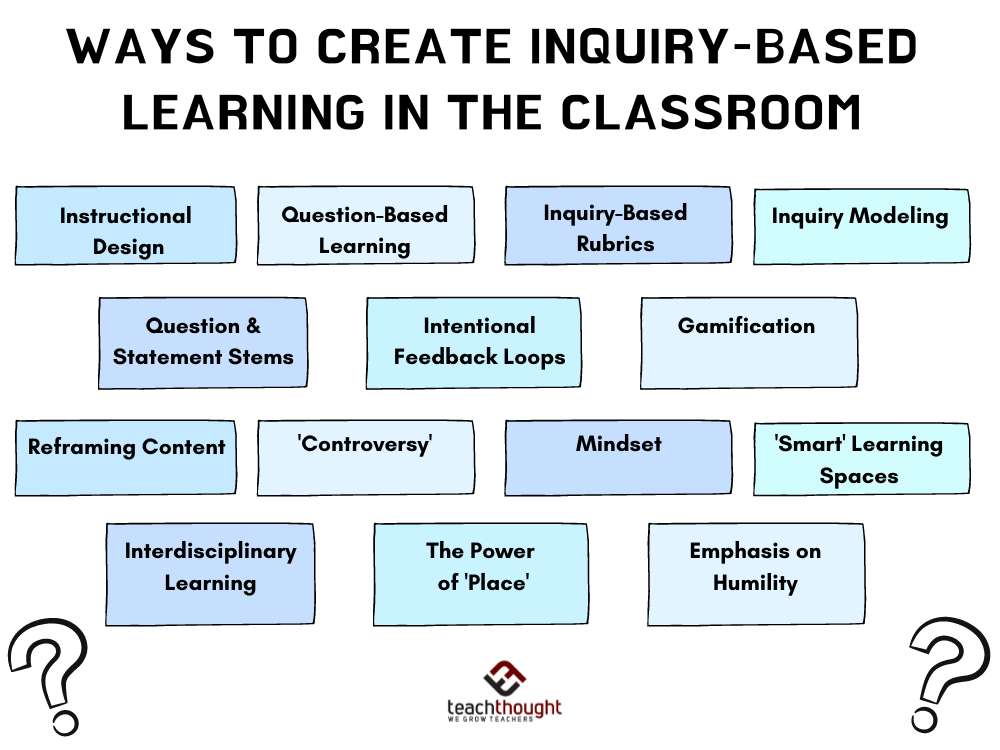
14 Effective Teaching Strategies For Inquiry-Based Learning
by TeachThought Staff Inquiry-based learning is an approach to learning guided by students through questions, research, and/or curiosity. An inquiry-based learning strategy is simply a way to facilitate inquiry during the learning process. It might be useful to think of ways to suppress inquiry to emphasize the strategies that might be used to promote it.…
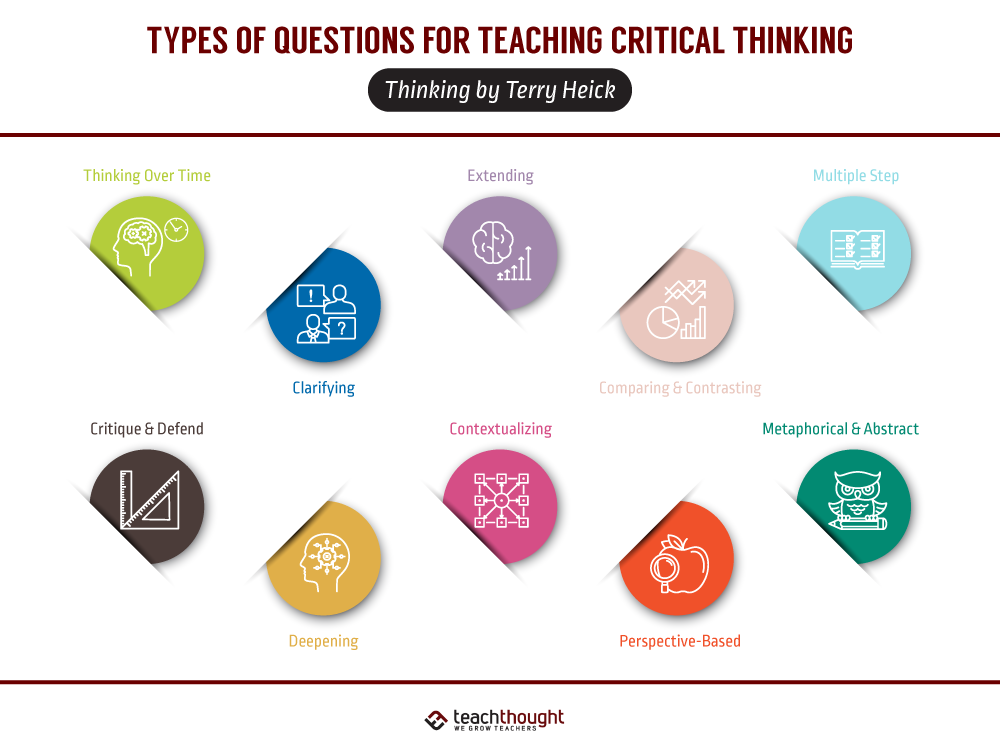
20 Types Of Questions For Teaching Critical Thinking –
by Terry Heick What are the different types of questions? Turns out, it’s pretty limitless. I’ve always been interested in them–the way they can cause (or stop) thinking; the nature of inquiry and reason; the way they can facilitate and deepen a conversation; the way they can reveal understanding (or lack thereof); the stunning power…
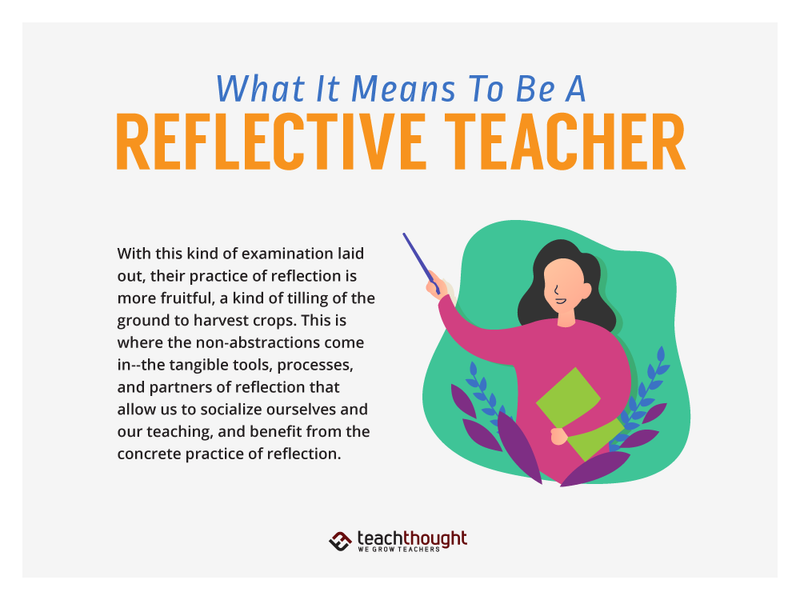
What It Means To Be A Reflective Teacher
by Terry Heick Reflection is a fundamental tenet of learning; it is also, therefore, a fundamental part of teaching. Why it happens is a matter of humility. But how and when it happens–and with whom–is less clear. This is partly because there are multiple sides to reflection–length, width, and depth. A Z-axis. It is whole.…
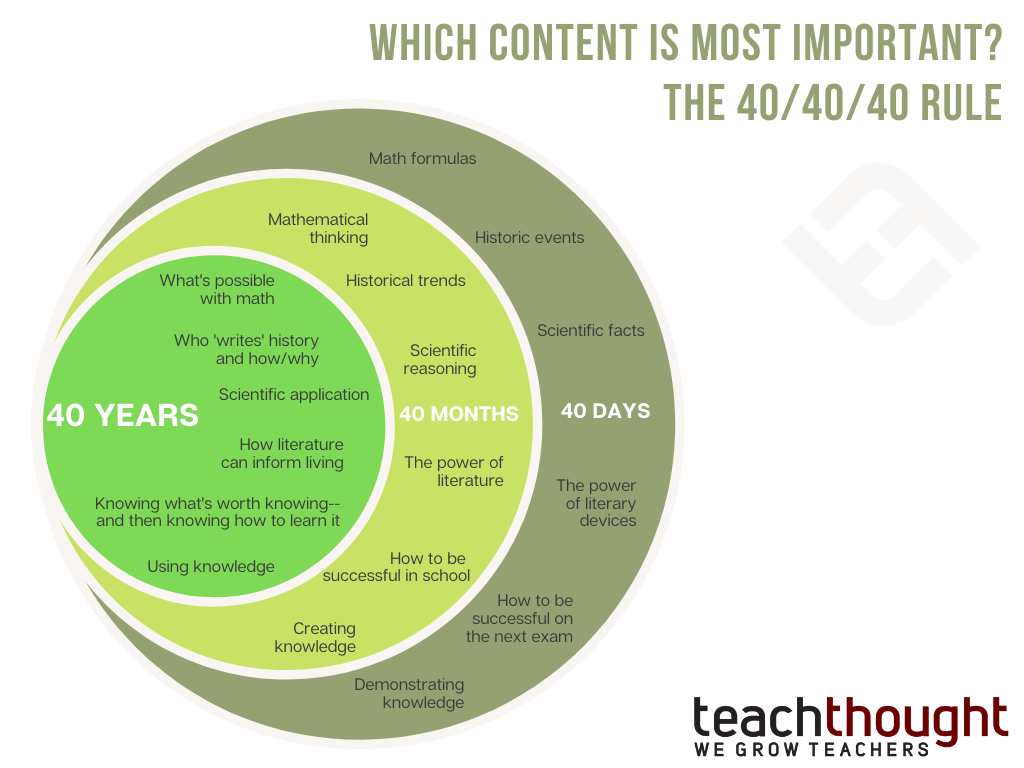
Which Content Is Most Important? The 40/40/40 Rule
by Terry Heick I first encountered the 40/40/40 rule years ago while skimming one of those giant (and indispensable) 400 page Understanding by Design tomes. The question was simple enough. Of all of the academic standards, you are tasked with ‘covering’ (more on this in a minute), what’s important that students understand for the next…
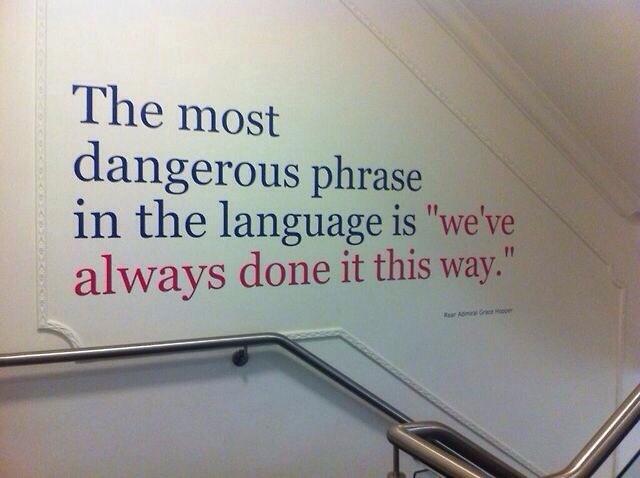
The Most Dangerous Phrase In Education
by Terry Heick I was speaking (tweeting) with Mark Barnes tonight, and he mentioned the idea of challenging existing forms and practices. And then someone tweeted the above image–a quote attributed to Rear Admiral Grace Hopper, according to the image source globalnerdy.com–and I was happy and favorited and saved and blogged. “We’ve always done it this…
